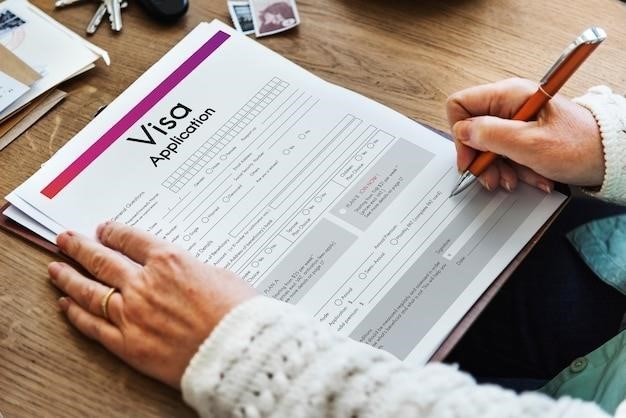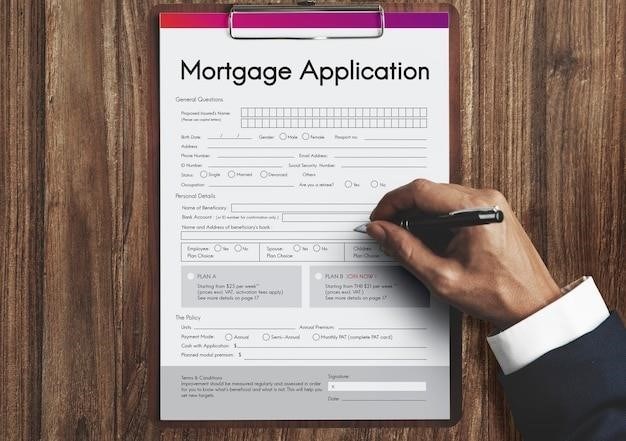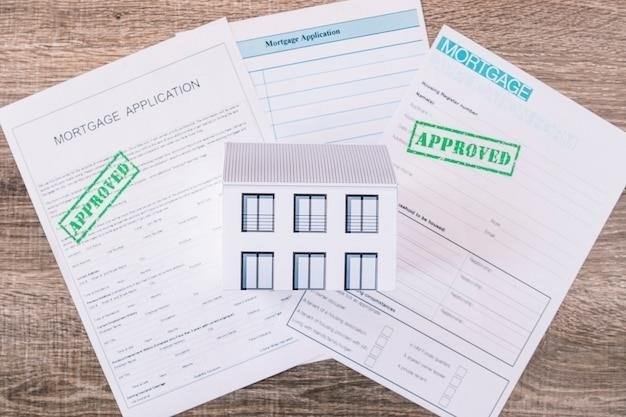Ontario Rental Application Form 410⁚ A Comprehensive Guide

This guide provides a comprehensive overview of Ontario Rental Application Form 410, a standard form used by landlords in Ontario to collect information from potential tenants. We’ll delve into the form’s purpose, key sections, and the process of filling it out. We’ll also address tenant rights and responsibilities, landlord perspectives, and legal considerations. This guide will help you navigate the rental application process in Ontario with ease and clarity.
What is Ontario Rental Application Form 410?
Ontario Rental Application Form 410, developed by the Ontario Real Estate Association (OREA), is a standardized document used by landlords across the province to gather information from prospective tenants. It serves as a comprehensive application that helps landlords evaluate potential renters based on various criteria, including their financial stability, rental history, and personal references. The form is designed to ensure a consistent and fair process for both landlords and tenants, promoting transparency and reducing the risk of misunderstandings. The form covers key details such as personal information, employment history, income verification, and references. This information allows landlords to make informed decisions about who to rent their properties to, ultimately contributing to a smoother and more efficient rental process.
Purpose and Use of Form 410
Form 410 plays a crucial role in the rental process in Ontario, serving as a standardized tool for landlords to assess potential tenants and make informed decisions. The form’s primary purpose is to collect comprehensive information about a prospective tenant’s financial stability, rental history, and overall suitability for the property. Landlords use this information to evaluate an applicant’s ability to meet their financial obligations, their history as a responsible tenant, and their compatibility with the property and community. By using a standardized form, landlords can ensure that all applicants are evaluated on the same criteria, promoting fairness and consistency in the rental selection process. Ultimately, Form 410 aims to streamline the rental application process, making it more efficient and transparent for both landlords and tenants.
Key Sections of the Form
Form 410 is structured to gather essential information about a prospective tenant. It typically includes sections such as⁚
- Personal Information⁚ Name, address, phone number, email, and other contact details.
- Employment Information⁚ Employer’s name, address, job title, and length of employment. This section might also ask about income verification, such as pay stubs or a letter of employment.
- Rental History⁚ Previous addresses, landlords’ names, and contact information, along with the duration of previous tenancies. This helps landlords assess the applicant’s history as a tenant.
- References⁚ Personal and professional references who can vouch for the applicant’s character and reliability. This section may include contact information for individuals who can provide insights into the applicant’s behavior and financial responsibility.
- Financial Information⁚ This section might require details about the applicant’s income, credit history, and any outstanding debts. It could also ask about the applicant’s source of funds for the rent payment.
- Other Information⁚ This section may include specific questions tailored to the landlord’s requirements, such as the number of occupants, pet information, or any specific needs or preferences the applicant might have.
These sections provide landlords with a comprehensive picture of the applicant’s background and their ability to meet the requirements of the tenancy.
Filling Out the Form
Completing Form 410 accurately and thoroughly is crucial for a successful rental application. Here’s a step-by-step guide⁚
- Download the Form⁚ Obtain a copy of Form 410 from the Ontario Real Estate Association (OREA) website or from a real estate agent. It’s often available as a fillable PDF document.
- Read the Instructions⁚ Carefully review the instructions provided with the form. This will ensure you understand the required information and the formatting guidelines.
- Provide Accurate Information⁚ Fill out the form with truthful and complete information. Be sure to double-check your answers for any errors or omissions.
- Support Your Application⁚ Gather any supporting documentation that might be requested, such as proof of income, credit reports, references, and identification. This will help strengthen your application and demonstrate your preparedness.
- Submit the Form⁚ Submit the completed form to the landlord, either in person or electronically, following their instructions.
Required Documents
In addition to filling out Form 410, landlords may request supporting documentation to verify the information you provide and assess your suitability as a tenant. While the specific documents required can vary, common requests include⁚
- Proof of Income⁚ This could include pay stubs, bank statements, employment letters, or tax returns. Landlords want to ensure you can afford the rent.
- Photo Identification⁚ A driver’s license, passport, or other government-issued ID is often required for verification purposes.
- Credit Report⁚ A credit report allows landlords to assess your financial history and creditworthiness.
- References⁚ Providing contact information for previous landlords or employers allows landlords to gather feedback on your rental history and character.
- Other Documents⁚ Depending on the specific property or landlord’s preferences, additional documents may be required, such as proof of insurance, pet information, or a co-signer agreement.
Landlord’s Perspective
From a landlord’s standpoint, Form 410 serves as a valuable tool for screening potential tenants and making informed decisions about who to rent to. The form helps landlords gather essential information about prospective tenants, including their financial stability, rental history, and personal details. By reviewing the completed form and supporting documentation, landlords can assess the applicant’s ability to meet the terms of the lease agreement, such as paying rent on time and maintaining the property in good condition. Form 410 also provides a standardized framework for landlords to collect information from all applicants, ensuring a fair and consistent evaluation process.
Tenant’s Rights and Responsibilities
While Form 410 is primarily focused on providing landlords with information, it also serves as a starting point for outlining tenant rights and responsibilities. It’s crucial for tenants to understand their rights under Ontario’s Residential Tenancies Act, which includes the right to a safe and habitable dwelling, the right to privacy, and the right to be treated fairly by their landlord. Tenants also have responsibilities, such as paying rent on time, maintaining the property in a reasonable condition, and adhering to the terms of the lease agreement. By familiarizing themselves with their rights and responsibilities, tenants can ensure a positive and harmonious rental experience.
After Submitting the Application
Once you’ve submitted your completed Form 410 and any required supporting documents, the landlord will review your application. This process may involve verifying your information, conducting background checks, and contacting your references. The landlord will then decide whether to offer you the rental unit. If you’re chosen, a formal Residential Rental Agreement will be presented, outlining the terms of your tenancy. This agreement is legally binding and should be carefully reviewed before signing. It’s important to understand your rights and responsibilities as a tenant in Ontario and to ensure all terms are clear before committing to the rental agreement.
Legal Considerations
It’s essential to understand the legal implications of Ontario Rental Application Form 410. The form itself is not a legally binding rental agreement. It serves as a tool for landlords to gather information and assess potential tenants. Landlords are bound by Ontario’s Residential Tenancies Act, which outlines the rights and responsibilities of both landlords and tenants. This includes provisions regarding tenant screening, the collection of personal information, and the handling of deposits. Furthermore, landlords must ensure that their rental application process complies with the Human Rights Code of Ontario, prohibiting discrimination based on protected grounds. If you have any concerns about the legal aspects of the application process, it’s advisable to consult with a legal professional specializing in landlord-tenant matters.
Resources and Links
For further information and resources regarding Ontario Rental Application Form 410 and related topics, you can explore the following websites⁚
- Ontario Real Estate Association (OREA)⁚ OREA is the governing body for real estate professionals in Ontario. Their website provides information on various aspects of real estate, including rental applications.
- The Landlord and Tenant Board (LTB)⁚ The LTB is an independent tribunal that resolves disputes between landlords and tenants in Ontario. Their website offers valuable resources on tenant rights and responsibilities, as well as information on filing applications and appeals.
- ServiceOntario⁚ ServiceOntario is the government website for Ontario, providing access to various services, including information on consumer rights and legal resources.
By utilizing these resources, you can gain a comprehensive understanding of the rental application process in Ontario and ensure that you are well-informed throughout the process.

Frequently Asked Questions
Here are some common questions about the Ontario Rental Application Form 410, providing clarity and guidance for both landlords and tenants.
Is there a standard rental application in Ontario?
Yes, the Ontario Real Estate Association (OREA) has developed a standard rental application form known as Form 410. This form is widely used by landlords and real estate agents in Ontario to collect information from potential tenants. While landlords are not legally required to use Form 410, it serves as a standardized template for gathering essential information, ensuring a consistent approach to tenant screening. The form helps landlords assess a tenant’s suitability by providing a comprehensive overview of their personal details, financial history, and rental references.
Can a landlord ask for proof of income in Ontario?
Yes, landlords in Ontario can ask for proof of income from potential tenants. This is a standard practice to ensure that tenants can afford the rent and meet their financial obligations. Landlords may request documentation such as pay stubs, bank statements, or employment letters to verify income. While landlords cannot legally require a specific amount of income, they have the right to assess the tenant’s financial stability and ensure their ability to pay rent. It’s important to note that landlords must treat all tenants fairly and not discriminate based on income or other protected grounds.
Can a landlord ask for a photo ID in Ontario?
Yes, landlords in Ontario can legally request a photo ID from prospective tenants as part of the rental application process. This is a standard practice to verify the identity of the applicant and ensure that they are who they claim to be. A photo ID can be a driver’s license, passport, or other government-issued identification. While it is not mandatory for tenants to provide a photo ID, landlords have the right to request it to protect their interests and prevent potential fraud or identity theft. Landlords must ensure that they are using this information for legitimate purposes and not for discriminatory practices.
